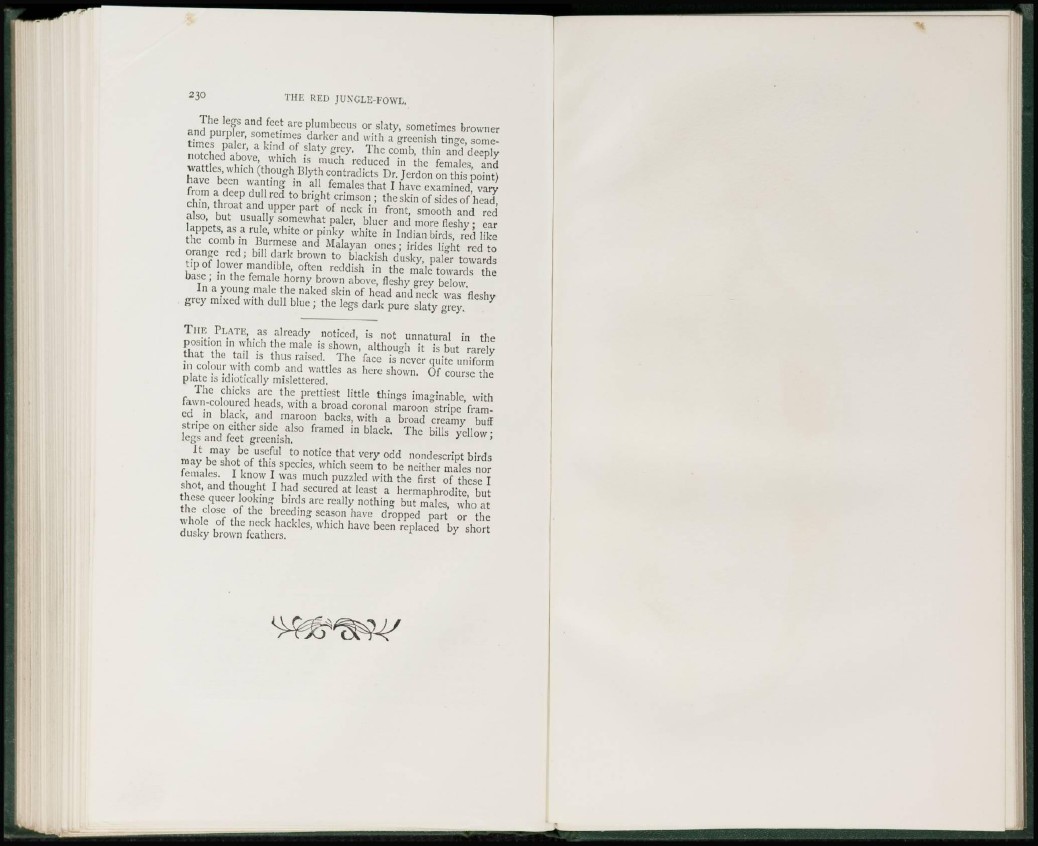
The legs and feet are plumbeous or slaty, sometimes browner
and purpler, sometimes darker and with a greenish tinge, sometimes
paler, a kind of slaty grey. The comb, thin and deeply
notched above, which is much reduced in the females, and
wattles, which (though Blyth contradicts Dr. Jerdon on this point)
have been wanting in all females that I have examined, vary
from a deep dull red to bright crimson ; the skin of sides of head,
chin, throat and upper part of neck in front, smooth and red
also, but usually somewhat paler, bluer and more fleshy; ear
lappets, as a rule, white or pinky white in Indian birds, red like
the comb in Burmese and Malayan ones; irides light red to
orange red; bill dark brown to blackish dusky, paler towards
tip of lower mandible, often reddish in the male towards the
base ; in the female horny brown above, fleshy grey below.
In a young male the naked skin of head and neck was fleshy
grey mixed with dull blue ; the legs dark pure slaty grey.
T H E PLATE, as already noticed, is not unnatural in the
position in which the male is shown, although it is but rarely
t h a t the tail is thus raised. The face is never quite uniform
in colour with comb and wattles as here shown. Of course the
plate is idiotically mislettered.
The chicks are the prettiest little things imaginable, with
fawn-coloured heads, with a broad coronal maroon stripe framed
in black, and maroon backs, with a broad creamy buff
stripe on either side also framed in black. The bills yellow ;
legs and feet greenish.
I t may be useful to notice that very odd nondescript birds
may be shot of this species, which seem to be neither males nor
females. I know I was much puzzled with the first of these I
shot, and thought I had secured at least a hermaphrodite, but
these queer looking birds are really nothing but males, who at
the close of the breeding season have dropped part or the
whole of the neck hackles, which have been replaced by short
dusky brown feathers.